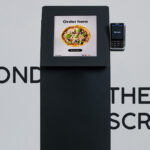Published by
Division of Labor
Acquiring and retaining patients for a healthcare system has only become more difficult in recent years as more care options present themselves and the ease of transferring to another provider has increased. As we talk with prospective clients, we’ve been noticing a worrying trend as more systems divide the labor to address these separate challenges.
Division of labor has allowed for many great products and services: the affordable Model T, the daily newspaper, your… annual physical? While we aren’t putting patients on conveyor belts (yet?) our healthcare systems don’t rely on one person to know how to schedule an appointment, register a patient, run an insurance check, take vital signs, diagnose maladies, prescribe medications, generate a bill, etc. Like any other large organization, they split duties into different groups to make this possible. More often than we’d like this leads to the dreaded silos.
The Trouble with Silos
The insidious thing about silos is that the issues they create generally don’t rear their heads until an outside light is shone upon them. One of those lights might be a customer’s experience. Do I deal with Angelo my local State Farm agent or call the 800 number and hope Jake answers when I want to adjust the coverage on my car? If I call Jake, he may tell me to call Angelo or vice versa. Ultimately it doesn’t matter to me who adjusts it so long as I’m covered, but State Farm has a division of labor for such things that creates friction for me as a customer. (Also, I can confirm that Jake does not appear if you sing the jingle regardless of pitch, volume, or presence of your spouse.)
Another light shines when systems are layered across these silos. This has become more and more apparent as we digitize our processes. Anyone that has transitioned from the paper world to an Electronic Health Record has experienced this. Why does each clinic have different scheduling flows? Why are there 22 different order sets for pneumonia? They were created and worked in silos, but now decisions need to be made.
This is why the emerging trend of seeing separate consumer/customer experience teams (to attract new patients) and patient experience teams (to retain patients) is perplexing. It’s another division of labor; another set of silos. To be sure, there are different tactics that need to be employed to attract the attention of someone that may have never heard of your organization. Communicating with someone when you already have their email, phone number, and a patient portal account is undoubtedly easier. The temptation to divide the labor for these separate channels and work efforts is understandably alluring. We’ve even seen it taken so far that a website was considered solely for attracting new patients and mobile app solely for existing patients, an easy division of labor.
The Patient Shines Both Lights
But from the patient’s perspective? That makes no sense. Like so many other experiences in modern life, a patient choosing a healthcare provider is becoming both more frequent (experience) and increasingly digital (system). As a patient I need an incentive to re-choose a system’s services each time I need care. Extended hours of operation or 24/7 telehealth availability is just as important to have top of mind whether it’s my first visit or my 100th visit. If I don’t have my phone handy, I should be able to check when my upcoming appointment is via a web browser.
Difficulty scheduling an appointment via a mobile app will not only incent new patients to seek care elsewhere, but also existing ones. A patient may have had a great experience on their initial visit, but if a retailer offers them a same day appointment from a Google search or their employer offers a telehealth visit through their employee portal app they are increasingly likely to choose convenience over loyalty for their next visit. Both the messaging and the modality are blurring between new and existing patients. The circles in the Venn diagram of work to be done for each group is only overlapping more as time goes on.
As we talk with organizations about bringing digital patient experiences to life, we already find ourselves in a position to bring together different areas within an organization: marketing, IT, operations, and providers all interact with a patient’s digital experience whether they are new or have been around for decades. Successful implementation of this one digital system demands these groups do not work in silos. Dividing the labor between acquisition and retention will only add more silos.
Already There?
Is this happening in your organization? If so, it’s crucial to recognize and address this challenge. A divided approach to consumer and patient experiences will create friction, confusion, and dissatisfaction. Unfortunately, that is difficult to get across to people working in their silos. Fortunately, there are tools to make this easier.
Consider utilizing an Experience Blueprint as part of a Service Design workshop. This process is specifically designed to bring together siloed groups, fostering collaboration and a shared understanding of how their work impacts the patient’s journey. You’ll see the lightbulbs going off in people’s minds as they see the patient’s lights break across the silos. Only when this happens, can you create a seamless, cohesive experience for both new and existing patients, ensuring their loyalty and satisfaction with your healthcare system.
Learn more about how a Service Design workshop might benefit your organization here.
Share:
Categories
tags
Related Posts


The Great Big Budget Cut: Prioritization


